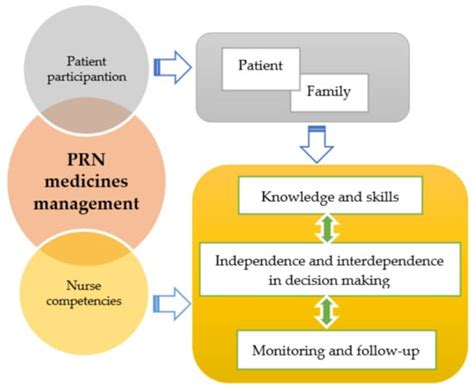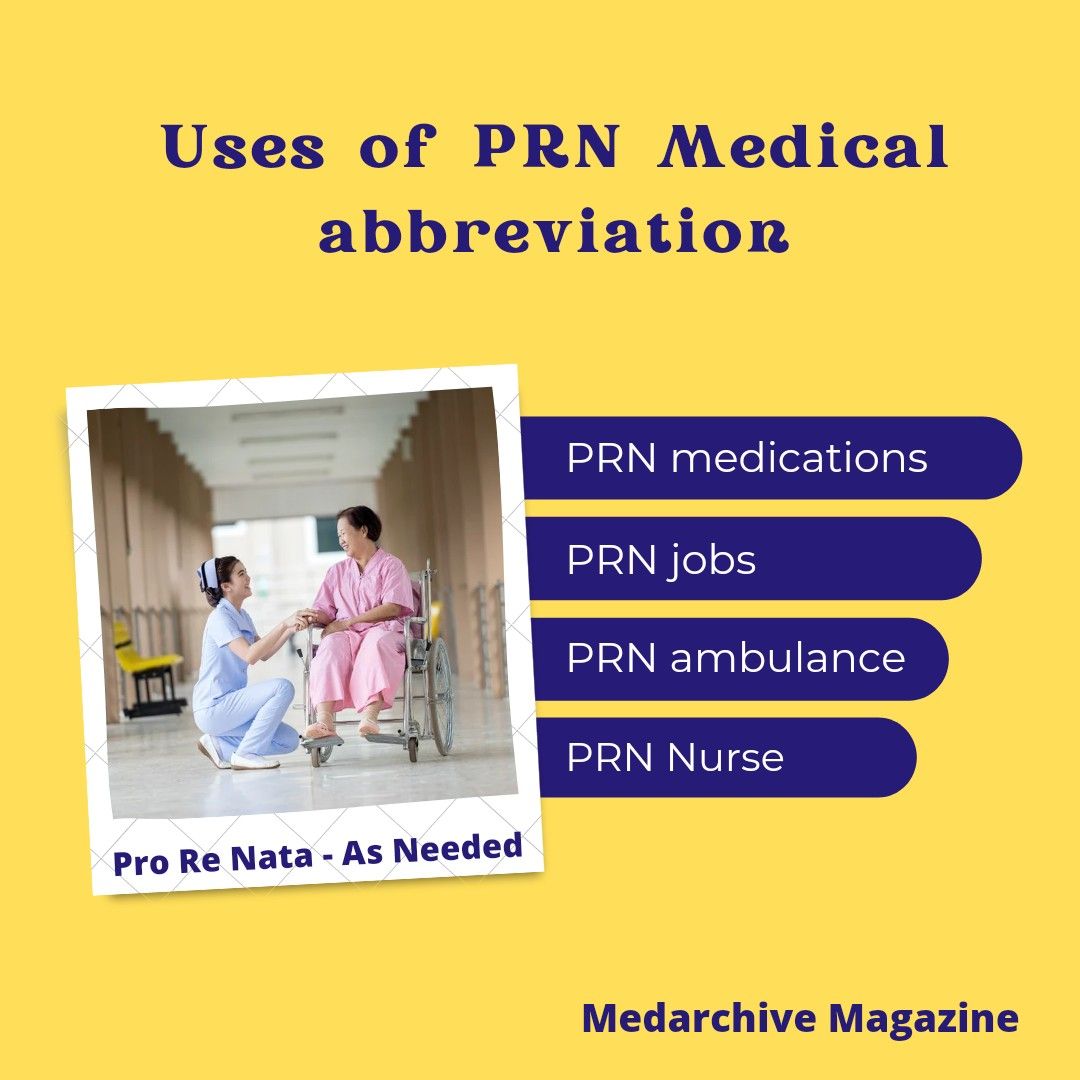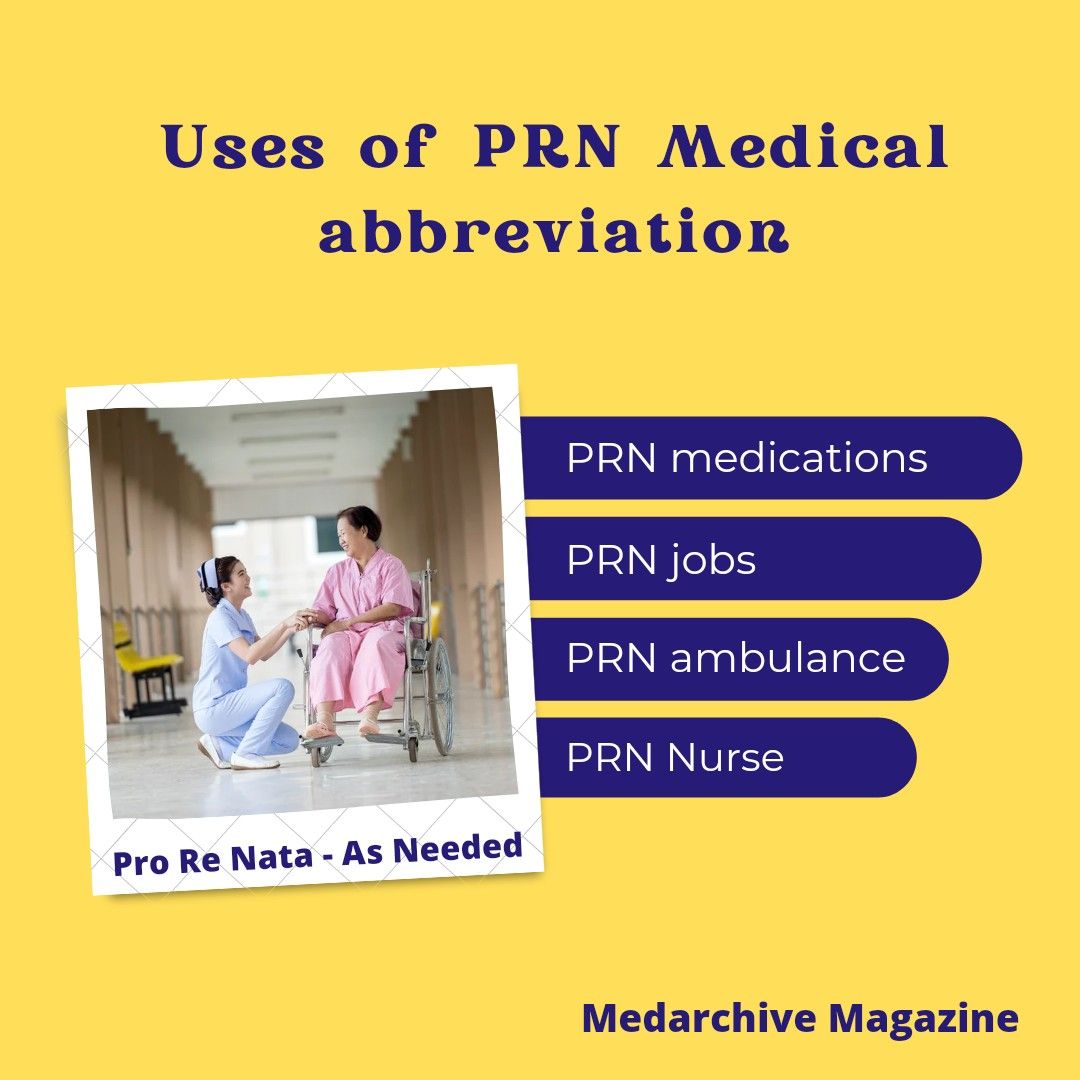Unveiling the Meaning of prn in Nursing

The term prn is a commonly used abbreviation in the field of nursing, yet its meaning and implications are often not fully understood by those outside the medical profession. This article aims to shed light on the significance of prn in nursing, exploring its origins, usage, and impact on patient care. By delving into the intricacies of this terminology, we can better understand its role in healthcare settings and the important decisions it influences.
Understanding the Origins of prn

The abbreviation prn originates from the Latin phrase pro re nata, which translates to “as the situation requires” or “as needed.” This term has been adopted by the nursing profession to convey a specific type of medication administration or intervention. It signifies that a treatment or medication is to be given based on the patient’s current condition or specific symptoms, rather than following a strict schedule or routine.
The use of prn medications and interventions is a common practice in nursing, allowing healthcare professionals to tailor care to individual patient needs. This flexibility is particularly valuable in managing acute symptoms, providing comfort, and ensuring patient safety and comfort.
The Practical Application of prn in Nursing

In nursing practice, prn is used in various contexts, including medication administration, patient assessment, and intervention planning. When a medication or intervention is ordered prn, it means that the nurse has the authority to administer or perform the action based on the patient’s presenting symptoms or changes in their condition.
For example, a patient experiencing severe pain might be prescribed a prn analgesic. The nurse would assess the patient's pain level, considering factors such as pain intensity, duration, and impact on daily activities. Based on this assessment, the nurse would decide whether to administer the analgesic, ensuring it is given only when necessary and not as a routine practice.
Benefits and Considerations of prn Medication Administration
The prn approach to medication administration offers several advantages. It allows for individualized care, ensuring that patients receive the necessary treatments promptly. By assessing the patient’s condition before administering medication, nurses can prevent over-medication and potential adverse effects. This practice also empowers nurses to make critical decisions, contributing to a patient-centered approach to care.
However, the prn approach also presents challenges. It requires nurses to have a deep understanding of patient conditions, potential side effects, and the appropriate timing of interventions. Additionally, proper documentation is essential to ensure continuity of care and effective communication among the healthcare team.
Impact on Patient Outcomes and Safety
The use of prn medications and interventions has a significant impact on patient outcomes and safety. By allowing for flexible and responsive care, prn orders can lead to improved symptom management and enhanced patient comfort. This approach ensures that patients receive the necessary treatments promptly, contributing to better overall health outcomes.
However, the implementation of prn orders must be carefully managed to avoid potential risks. Inappropriate or excessive use of prn medications can lead to adverse events, medication errors, and compromised patient safety. Therefore, a balanced and well-informed approach to prn administration is crucial.
Promoting Safe and Effective prn Practice
To ensure the safe and effective use of prn orders, several strategies can be employed. Nurses should receive comprehensive education and training on prn medication administration, including proper assessment techniques and potential risks. Regular audits and feedback mechanisms can help identify areas for improvement and promote best practices.
Additionally, clear and concise documentation is essential for effective prn practice. Nurses should accurately record the reasons for administering prn medications, the patient's response, and any observed side effects. This information facilitates better communication among healthcare providers and aids in making informed decisions regarding patient care.
| Medication | Purpose | Frequency |
|---|---|---|
| Analgesic | Pain Relief | As needed for acute pain |
| Antiemetic | Nausea and Vomiting Control | PRN for nausea and vomiting |
| Antianxiety Medication | Anxiety Management | As required for anxiety symptoms |

Conclusion: Unlocking the Power of prn in Nursing
The term prn is a powerful tool in nursing practice, enabling healthcare professionals to provide individualized and responsive care. By understanding the origins, practical applications, and impact of prn orders, nurses can deliver optimal patient care, ensuring prompt symptom management and enhanced patient outcomes.
As we continue to explore the complexities of nursing practice, the role of prn medications and interventions will remain a critical aspect of patient care. Through ongoing education, research, and collaboration, we can further refine and enhance the use of prn orders, contributing to safer and more effective healthcare practices.
What does prn mean in nursing practice?
+Prn, derived from the Latin phrase “pro re nata,” means “as needed” or “as the situation requires.” In nursing, it refers to the administration of medications or interventions based on a patient’s current symptoms or condition rather than a fixed schedule.
Why is prn important in nursing care?
+Prn allows for individualized and responsive care, ensuring that patients receive necessary treatments promptly. It empowers nurses to make critical decisions based on patient assessments, leading to improved symptom management and enhanced patient comfort.
What are some common prn medications in nursing practice?
+Common prn medications include analgesics for pain relief, antiemetics for nausea and vomiting control, and antianxiety medications for managing anxiety symptoms. These medications are administered based on the patient’s presenting symptoms and the nurse’s assessment.



